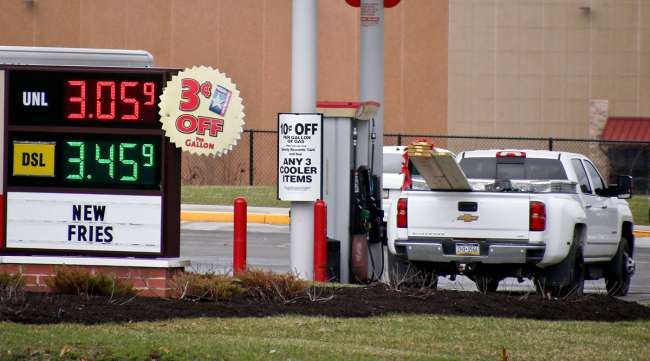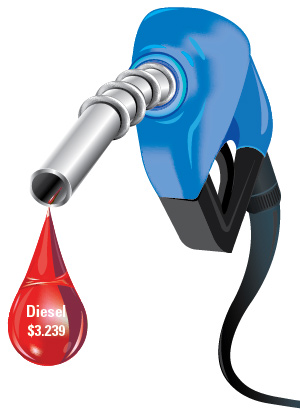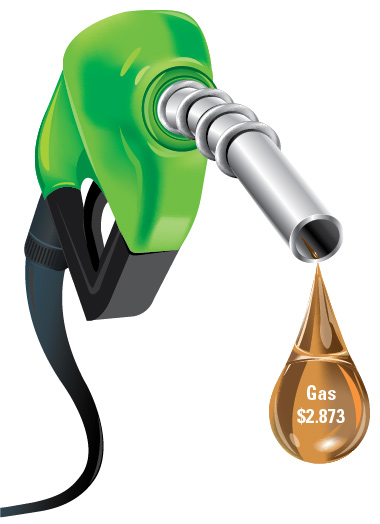Diesel Leaps 6.8¢ to $3.239 a Gallon; California Nears $4

The U.S. average retail price of diesel fuel surged 6.8 cents to $3.239 a gallon, the eighth straight week that trucking’s main fuel has gone up in price, according to the weekly report from the U.S. Department of Energy’s Energy Information Administration on May 14.
Diesel now costs 69.5 cents per gallon more than it did one year ago.
The average price of diesel rose last week in all regions nationwide. California is the most expensive place to buy the fuel, with a gallon costing $3.929, followed by the West Coast at $3.731. Diesel prices in California have climbed $1.02 per gallon in the past year. The Gulf Coast had the lowest price at $3.012 a gallon, up 5.7 cents from last week and up 63 cents in the past year, EIA reported.
Traders on the Nymex sent the price of West Texas Intermediate crude oil futures higher May 14 to $71.17 per barrel, up 47 cents.

The rapid increase means that carriers are left covering “the spread” until DOE publishes the new data when the carrier can bill customers for the change, said Jim Dingman, president of the fleet division of ITS Logistics in Sparks, Nev.
“For small to midsize carriers, this can mean $50,000 to $100,000 per week of unrecoverable cost for every 10 cents-per-gallon increase,” Dingman said.
If diesel crosses the $5-a-gallon threshold, it “would be our No. 1 cost on a per-mile basis,” he said. “We’re reviewing every fuel surcharge addendum we have and looking at every internal option to control consumption and cost.”
Tom Kloza, global head of energy analysis with the Oil Price Information Service, described the rise in fuel prices as “relentless.”
“Gasoline, crude oil, diesel and jet fuel are all at their highest prices since November 2014,” said Kloza, who predicts diesel will see a continuing move upward in the next six months because of demand for the fuel in emerging markets.
Kloza said he believes there will be a “wild third quarter” for fuel prices, with demand outstripping supply at times and crude oil rising to trade for more than $80 per barrel.
Still, fuel costs haven’t become an unmanageable burden to many carriers, Jonathan Starks, chief intelligence officer at industry forecasting firm FTR, wrote this week.
“While diesel price increases are a negative for the carriers, the relatively modest uptick in recent fuel costs is more than offset by significant gains in pricing and overall strong demand for transportation,” Starks reports.

EIA listed the average national price of gasoline May 14 as $2.873, a rise of 50.4 cents from a year ago. Gasoline prices rose in all regions of the country. A gallon of gas on the West Coast cost $3.405, the highest price nationally.
The agency implemented new methodologies for conducting the gasoline survey, and as a result, this week’s price is not directly comparable with last week’s price.
The new methodology better represents the volume of gas sold through big box stores such as Walmart and Costco Wholesale, according to Nanda Srinivasan, director of EIA’s office of survey development and statistical integration.
The change also provides a more accurate representation of the survey’s “frame,” which in this case is all the gas stations in the United States. There also was some updating of definitions of city and station locations, he said.
Despite the increase, 37 million Americans are projected to hit the roads during the Memorial Day weekend, according to the American Automobile Association.
Multiple factors are affecting the pump prices of gasoline and diesel. There is lingering aftershock from President Donald Trump’s decision to take the United States out of the international nuclear accord with Iran, the fifth-largest oil-producing nation in the world. However, oil prices rose but did not skyrocket after the president’s announcement, indicating that traders already had factored the withdrawal into their pricing analysis.
The impact of the pullout may become clearer as certain 90- and 180-day wind-down periods related to the pact announced by the U.S. Treasury Department get closer.
Also May 14, OPEC revised upward its forecast for global oil demand growth for 2018, though it warned that economic growth worldwide was uncertain due to sanctions, tariffs and the U.S. withdrawal from the Iran deal.
OPEC’s Monthly Oil Market Report for May stated that a one-time oil glut has been cut due to a 2017 agreement among suppliers to reduce production. Oil inventories among industrialized nations in March fell to 9 million barrels above the five-year average, down from 340 million barrels above the average in January 2017, according to the report from the Organization of Petroleum Exporting Countries.




